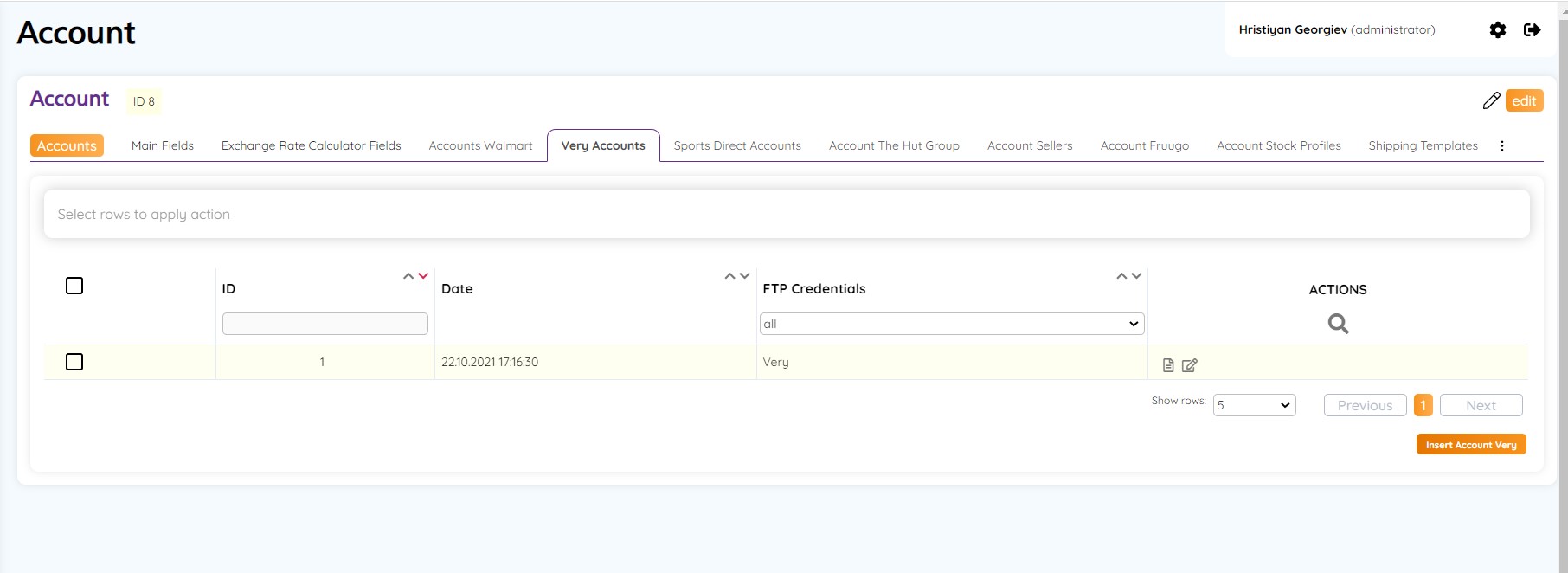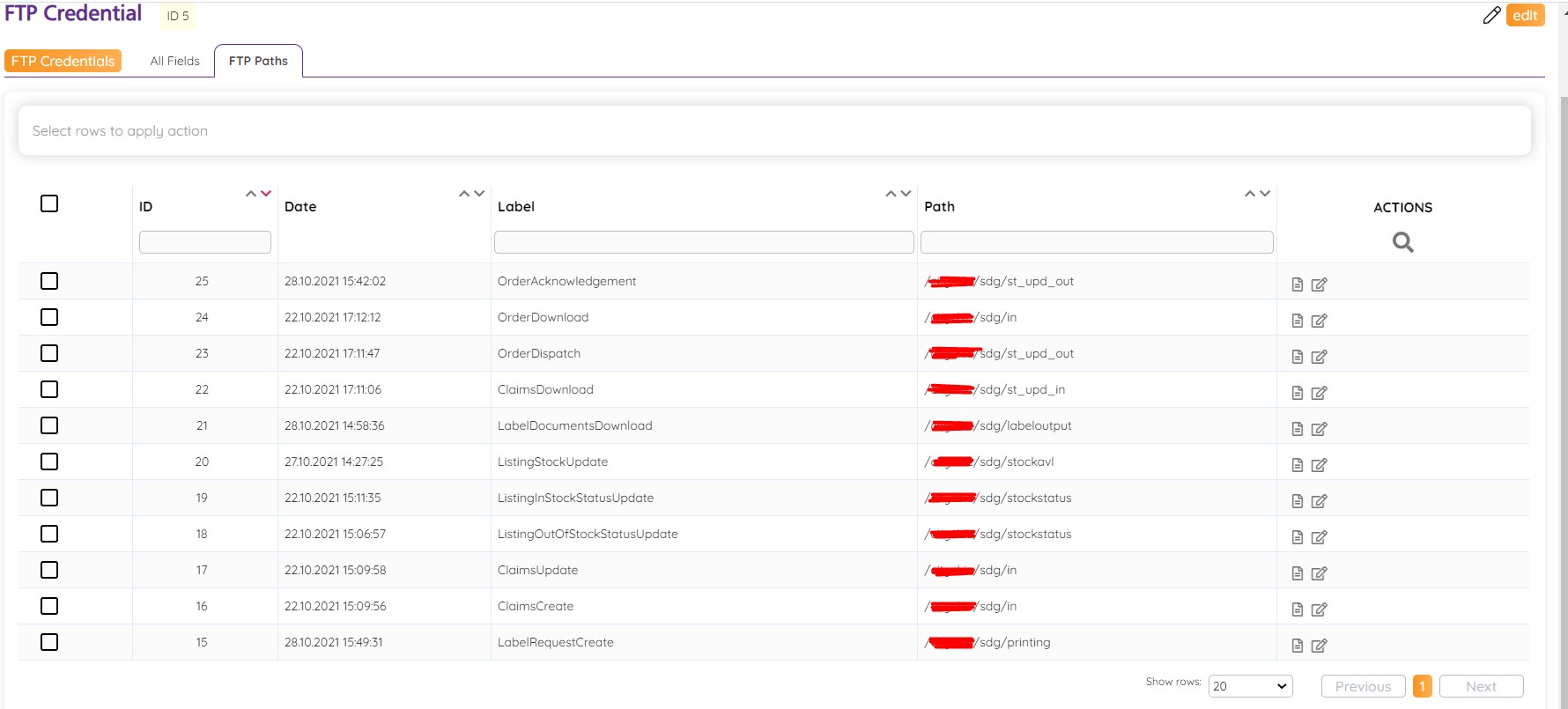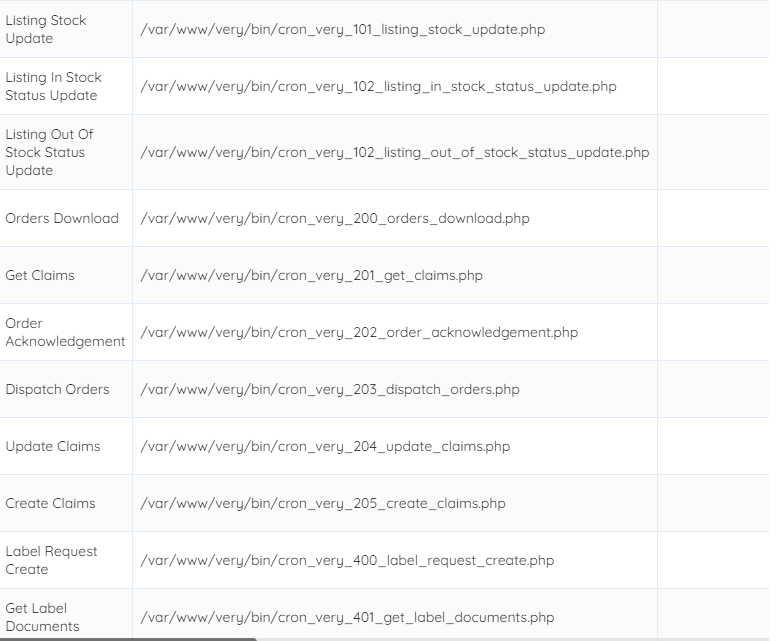Very user guide
Very (or very.co.uk) is a UK marketplace and brand owned by The Very Group selling everything from tech to tableware, Very is famous for its combination of big-name brands and on-trend fashion.The website has 3.8m active customers, £1.9bn sales and 652m visits annually.
1. Account Set-up
The whole communication is happening through an integrations operator called BluJay Solutions.All flows that can be automated, are automated through BluJay FTP mailbox exchanging formatted XMLs that BluJay will then pass on to Very and vice versa.
The account setup is straight forward, and we have introduced a Very table in the account section :


FTP Credentials - the ftp credentials tfor the integration, can be added/found in table 130
Automatic Claim Action -
Label Type - values are WHOLE,CARRIER,CARRIER RETURN (see below for more info on label types)
Label Format - The format of the label we are generating.
FTP Credentials :
These need to be set in table 130 in Hemi. The credentials are provided for the relevant account/seller by Very.

FTP Paths

The folders within the SFTP folder are used as follows, relevant to what messages you have chosen to integrate:
· “test” This folder contains subfolders named as below and should be used whilst in testing.
· “in” Order files are placed in here ready for us to download.
· “st_upd_out” Supplier Order Status Update messages are placed in here
· “st_upd_in” Order Status Update files from Very are placed in here ready for us to download.
· “printing” Supplier Print Request messages are placed here.
· “labeloutput” Label PDF files are placed here ready for us to download.
· “carrierinfo” Carrier Information XML files will be placed here when CMS print images are created.
· “stockstatus” Supplier Stock Status Update messages are placed here.
· “stockavl” Supplier Stock Position Update messages are placed here.
· “processed” Files sent by the supplier to be processed by BluJay will be moved here.
· “failed” Uploaded files with duplicate filenames will be moved to here.
2.Products
The product creation is done directly between the client and Very. Once the products are created on Very, we should receive a list with all listed products from the client and import them in Hemi. Please note that it is required to import the channel item IDs for the products as the updates are happening on SKU and channel item id level.
We are only managing stock availability for products listed on Very.
There are two supplier types for stock management for Very. One is "ring fenced stock" (the quantity actually matters) the other is "shared pool" (only the status matters). Ring fenced stock is when the client is managing and shipping the orders, so they are sending the stock updates to us. Shared pool is for example if the client is using a 3rd party warehouse management partner (like ProSKU) and all the stock is managed by this partner internally, so in the shared pool option we are only sending product statuses to Very, as the stock should be managed internally.
The supplier type is controlled from Account very on Account level.

Status update : We can update the status on BluJay(Very) with List/Revise the whole item. There are two statuses - In stock and Off sale
The product needs to be with product_status ‘product Created'. Once the update has gone through, the status will change to “product published’.
Quantity update : The flow is straight forward - we raise the update quantity flag to “Pending” and the updates are sent to BluJay.
3.Orders
Orders are downloaded every 5 minutes from very. We receive standard xml order files. After we download the order, we need to send acknowledgement update back to very and this is done via acknowledgement cron, which sends the status update every 10 minutes. The status updates are happening on order_item and order_item_line levels.
There are 3 statuses in total : Pending - this is the status when we receive the order Acknowledged - this is the status when we have sent the acknowledgement update Shipped - this is the status when the order has been shipped
Please note - The status is essential to be correct in Hemi and BluJay as if incorrect, this will not any further updates in BluJay.
Label Request
The Label request is a straightforward process for Very which is automated and is happening once the order has been successfully acknowledged. We submit the OrderID and request a type based on which we get back pdf, png or zpl (depending on our preferences). The labels are then stored to our marketplace logs FTP.
| LABEL_TYPE Value | RESPONSE_FORMAT Value(s) | WAP Notes |
|---|---|---|
| WHOLE | This will return an A4 pdf containing different sections to peal off and stick in the parcel or outside the package | |
| CARRIER | PNG, ZPL | Just the outside shipping label |
| CARRIERRETURN | PDF (Return note), PNG, ZPL (Carrier) | Should return both the outside shipping label and a return label for inside the package |
4.Taxonomy
There is no taxonomy needed for very as we are not listing products.
5.Additional details
There is a specific crontab group in table 41 called Very. Currently we have the following crons :

6. Tips
- If the supplier type is shared pool and we are using ProSKU as a warehouse manager and there is an order that has not been shipped on time, even though it is exported to ProSKU, we need to check if the order is actually in ProSKU. If the order is not there, this means that they probably don’t have the product and will not be able to ship it
- If there is an order not exported to ProSKU , we need to check if we have label document. We should not be exporting any orders to ProSKU without the label.
- We have a standard refund flow which needs to be actioned through the Hemi UI, however since we are not getting responses from BluJay, the refund will be left on status ‘Sent’ and the order status will not update to cancelled (so this can be done manually)



